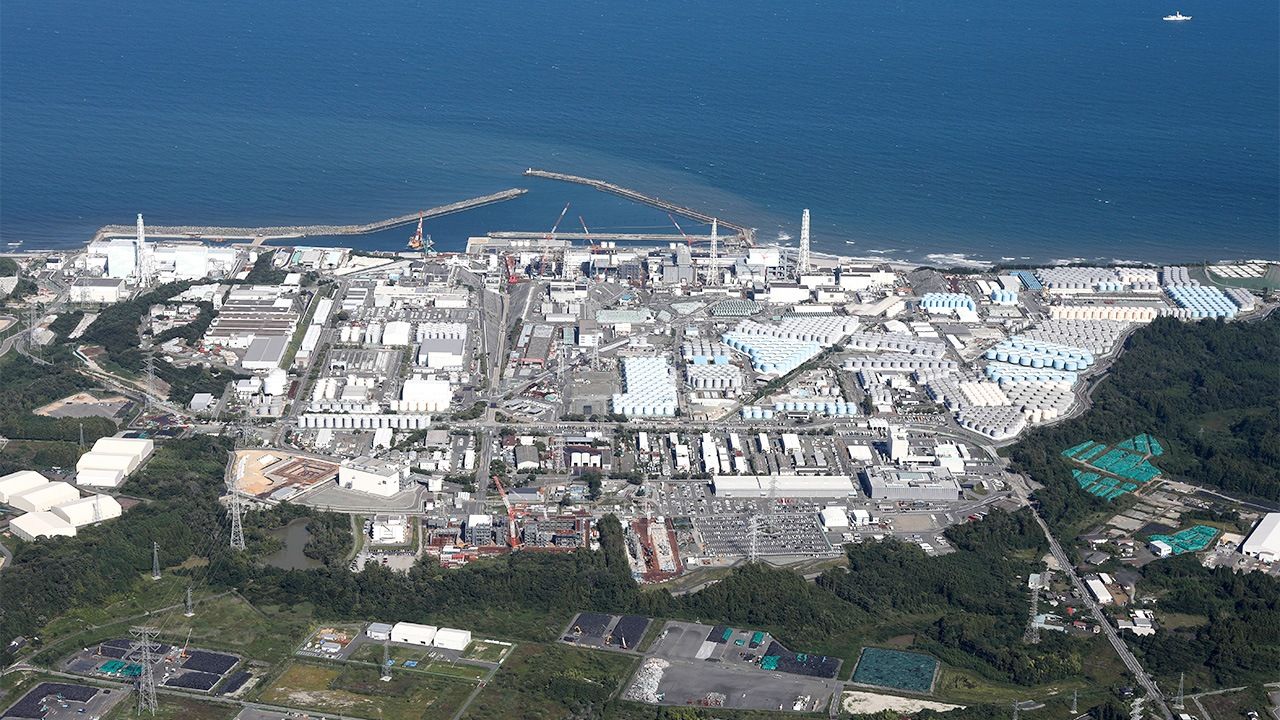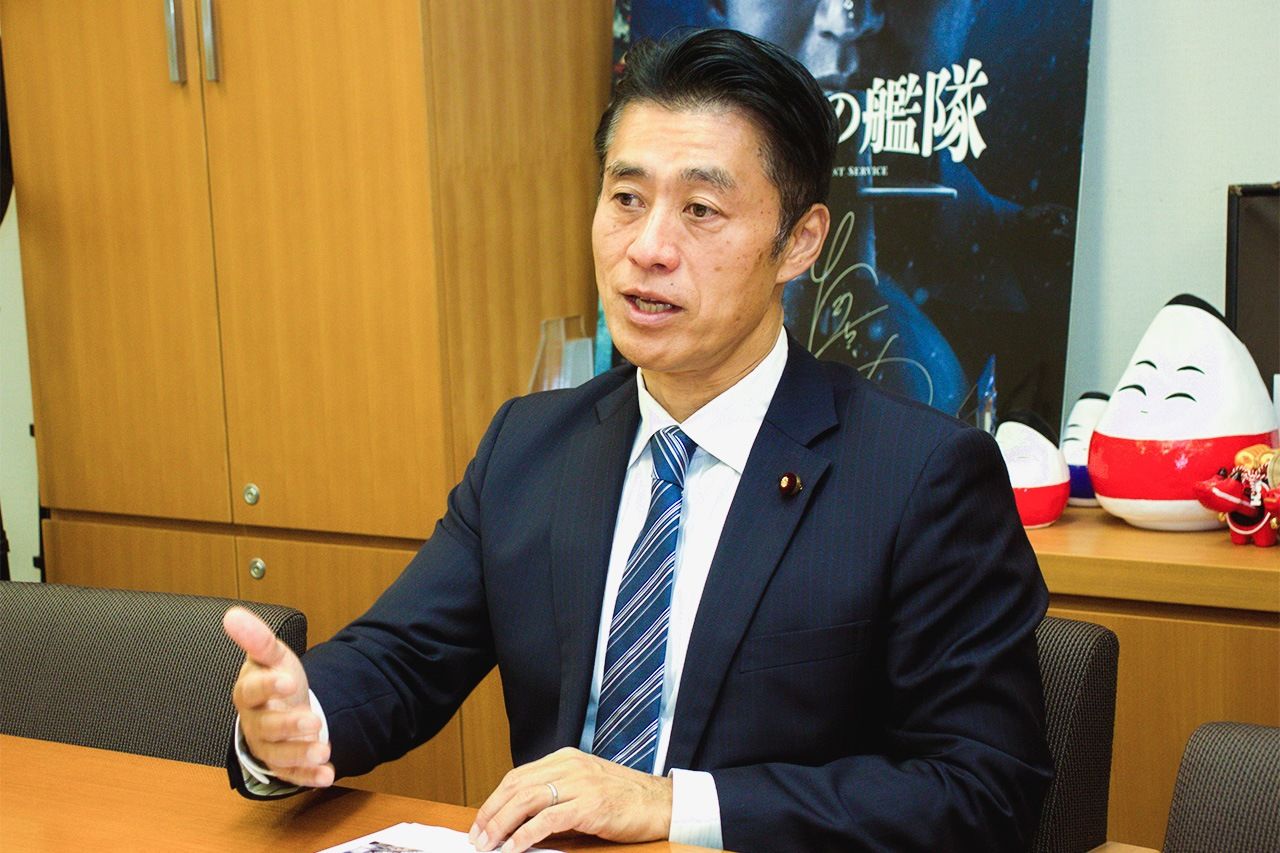
Former Fukushima Cleanup Chief Defends Wastewater Release: An Interview with Ex-Minister Hosono Gōshi
Politics Environment- English
- 日本語
- 简体字
- 繁體字
- Français
- Español
- العربية
- Русский
HOSOYA YUICHI Mr. Hosono, in the aftermath of the March 2011 Tōhoku earthquake and tsunami, you played a key leadership role in the government’s response to the accident at the Fukushima Daiichi Nuclear Power Plant—first as special advisor to Prime Minister Kan Naoto and then as minister of the environment and state minister in charge of the nuclear emergency. I understand you were also involved in the government’s decision, a decade later, to release treated water from the site into the ocean. Since then, you’ve tirelessly defended the plan and its safety, even publishing a manga on the subject on your blog. What’s your motivation for staying engaged in this controversial issue?
HOSONO GŌSHI I was the political official in charge of our response to the nuclear accident at Fukushima Daiichi. During the emergency, we had no option but to spray water into the structures to cool the reactors. Since the release of the treated water is the culmination of those actions, I feel it’s my responsibility as much as anyone’s.
I began to speak out about the need to start releasing treated water into the ocean all the way back in 2020, but it took the government years to take action. During that time, I conferred over and over with various parties, including the Nuclear Regulation Authority and the Agency for Natural Resources and Energy, as well as the people of Fukushima Prefecture
Unintended Consequences
HOSOYA Did you think about the problem of contaminated water when you were leading the emergency response to the accident in the spring of 2011?
HOSONO In the beginning, I was totally focused on the problem of securing the necessary water supply and cooling the reactors. Frankly, at that stage there was no time to worry about what we’d do with the water afterward.
Sometime near the end of March, highly contaminated water was found to be leaking from one of the structures and flowing into the ocean. Ultimately, they were able to seal it off with liquid glass, but the international criticism was pretty intense. The trauma of that experience has stayed with me to this day. At that phase in the crisis, most of the world seemed to be pulling for Japan, but you could see how the mood could change.
Around that time, we decided to use the storage pits under the Unit 5 and Unit 6 reactor buildings to temporarily store some of the more contaminated water that had collected, but in order to do that we first had to pump out the [less contaminated] water that was already in the pits and discharge it into the ocean. We came under fire for that, too. Those two events made me keenly aware of the gravity of the wastewater problem.
Later in April or May, when the cooling was more or less under control, I was able to focus on the challenge of decontaminating the radioactive wastewater. The United States and France provided all kinds of advanced equipment, but nothing really worked. Eventually, we prevailed on Toshiba to take charge of the water processing. That led to the development of the multi-nuclide removal system known as ALPS [Advanced Liquid Processing System]. They continued to make improvements until, by late 2013, the system was able to remove all the radionuclides except for tritium. In the end, I guess it took a Japanese company to assume real ownership of the issue.
I was following the process closely, and once it was functioning properly, I felt the discharge of water into the ocean should begin as soon as possible. But the government was reluctant to move. It was years before Prime Minister Suga Yoshihide’s cabinet finally gave the green light.(*1)
Emphasis on Safety and Transparency
HOSOYA Most foreign governments, with the notable exception of Beijing, now agree that the ALPS-treated water is safe to release. But there must have been a lot of concern that any decision to discharge radioactive water would trigger a huge international backlash.
HOSONO Of course there was concern. That’s why I consistently stressed the need to guarantee that the treated water was safe to discharge and to maintain complete transparency. Japan has been very conscientious about that over the past few years. There’s still some criticism, but I feel that it’s driven by politics rather than science. I think it’s important to defend against those attacks, otherwise the misinformation will just keep spreading.
It was Prime Minister Suga who made the final decision to discharge the wastewater, and I wasn’t there at the time. But I had had quite a few opportunities to talk directly with Suga about the disposal issue, which he regarded as my department, since his time as chief cabinet secretary. The official in charge at the Energy Agency had already been replaced three or four times over the years. My hat is off to Suga for making a politically risky decision.
Some people ask why we can’t just leave the treated water in the storage tanks, since that seems to be working. But the tanks were never meant to be permanent, so there’s a risk of damage from typhoons, tornadoes, tsunamis, and so forth. Besides, it had gotten to the point where additional tanks would have to be built on the Futaba side, and that would impact decommissioning operations. The decision really couldn’t be put off any longer.
Countering Misinformation
HOSOYA You’ve called out certain news outlets for unscientific coverage that exaggerates the dangers of the treated water. What are your feelings about the media’s journalistic responsibility regarding this issue?
HOSONO There’s a specific reason that I began calling out the media. I saw that South Korean news outlets were quoting extensively from the Japanese media in their own coverage. They were also featuring lots of so-called experts from Japan. South Koreans were bound to think that if this was the way the discharge was being covered in Japan, then it really must be dangerous. In other words, when we let that kind of journalism go unchallenged at home, the same narrative is going to take hold overseas. I was worried that if we didn’t counter those misconceptions, they would spread around the world.
There are two basic objections coming out of the media. One is that the discharge of the treated water is a biological hazard. That I can clearly refute by citing the results of the government’s extensive studies and by pointing out that water containing tritium is routinely discharged from nuclear facilities all over the world.
More recently, media criticism has centered on concerns that the release of the treated water, even though scientifically safe, could spawn unfounded fears and damaging rumors [about Japanese marine products]. To that, I say, if you’re worried about groundless fears, the thing to do is relay the scientific facts, which show that the water is safe. If you spend all your time talking about groundless fears without bothering to cite the science, then in effect you’re spreading those fears. I’ve realized it’s necessary to counter that kind of coverage as well.
It’s true that some of the locals in Fukushima are worried about the stigma of radioactivity, and their concerns are understandable, given what they’ve been through up until now. But to report truthfully on a phenomenon, you have to convey a sense of how it fits into the bigger picture. Just zooming in on people with concerns isn’t balanced reporting. That point has been another focus of my information campaign.
China’s Miscalculation
HOSOYA Japan has made a concerted effort to secure the approval of various international agencies and governments for its release of the treated water, and it seems to me that they’ve been quite supportive overall. But with China, the water release has turned into yet another source of tension and friction. How do you think the Japanese government should respond to the criticisms we’ve heard from China?
HOSONO The five nuclear weapon states enjoy a privileged status when it comes to the handling of radioactive materials, including wastewater, and their nuclear weapons programs are completely exempt from inspections [by the International Atomic Energy Agency]. They know better than anyone about these issues because they’ve been dealing with them for so many years. The Chinese government is criticizing Japan’s handling of wastewater in full knowledge that the discharge poses no danger from a scientific standpoint.
I imagine Beijing thought this was a good way to tighten the diplomatic screws on Japan. It probably figured South Korea would react the same way, and the rest of East Asia would follow. But that was a miscalculation. There may be public opposition in South Korea, but it’s a democratic country, and since it relies on nuclear power, it has no choice but to discharge wastewater with a higher concentration [of radionuclides] than the water Japan is releasing. So South Korean President Yoon Suk-yeol took a different line from Beijing. Japan has also been able to assuage concerns among the Southeast Asian and Pacific Island countries.
I think the IAEA’s safety review mission tipped the scales. At first I was worried that the Chinese scientists on the task force would exercise veto power and prevent the mission from publishing a favorable conclusion. But these are scientists, after all, and there was no arguing with the data the mission collected and reviewed.
HOSOYA So, what’s Beijing’s next move?
HOSONO I think China has begun working with Japan to negotiate a truce of sorts. But in view of all that’s been done up to this point, I can’t see the need for any further studies. The IAEA’s review reached a definitive conclusion, and China participated in that process.
(Originally written in Japanese by Ishii Masato of the Nippon.com Editorial Department based on a November 29, 2023, interview. Banner photo: The Fukushima Daiichi Nuclear Power Plant, as seen from the air on August 24, 2023. © Jiji.)
(*1) ^ On April 13, 2021, an inter-ministerial council reached the decision to discharge treated water from the Fukushima site into the ocean.—Ed.
Fukushima Great East Japan Earthquake nuclear power Fukushima Daiichi Nuclear Power Station accident wastewater


